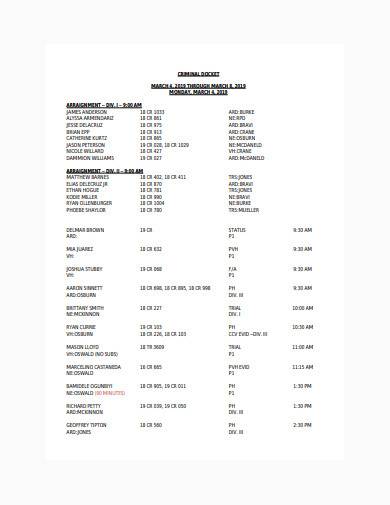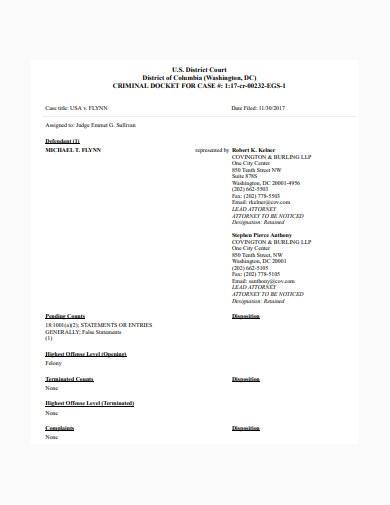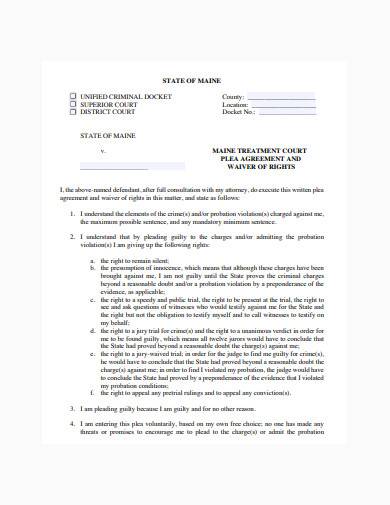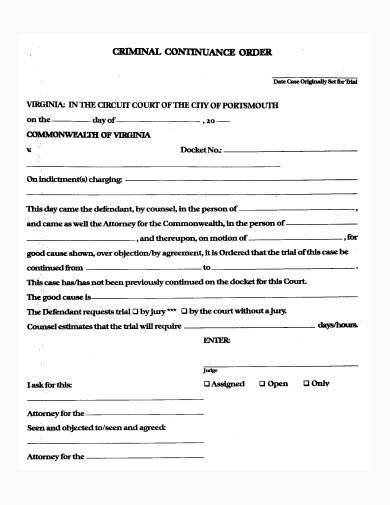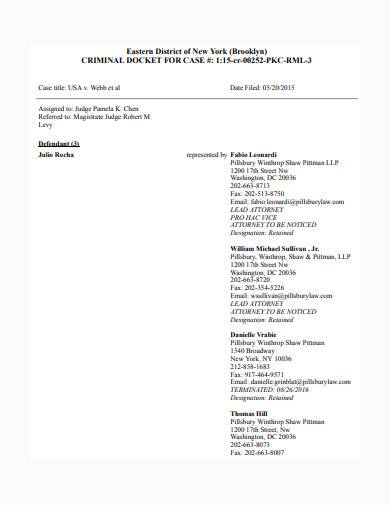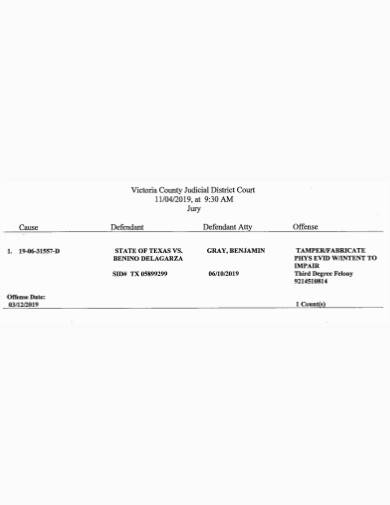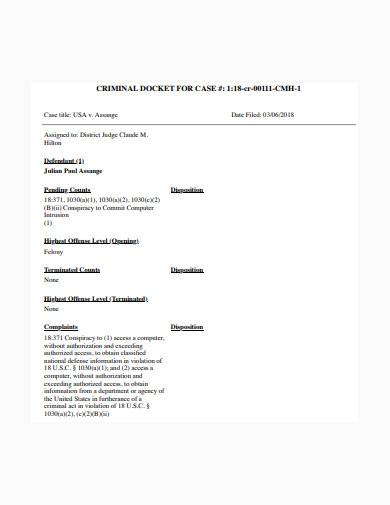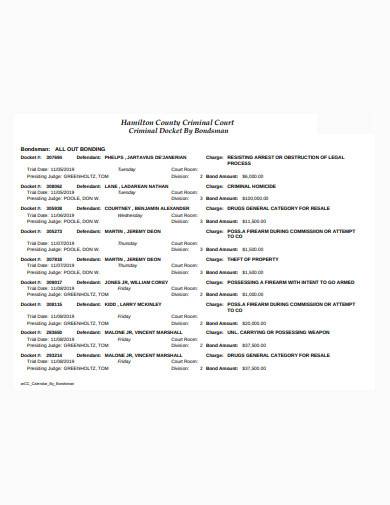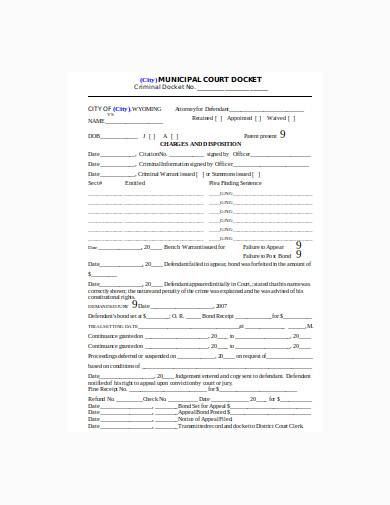We will never run short of public records because new records are produced every day. Public records are pieces of information that are not considered confidential. These pieces of information are put on file as documents and available for the public to view, study or scrutinize. Public records pertain to the government’s conduct, so you shouldn’t be surprised that it’s made up of government documents. A criminal docket is an example of a public record. What exactly is a criminal docket? Let’s find out.
What Is a Criminal Docket?
Every institution has its own calendar of activities, where schedules of different events are recorded. It’s accessible to everyone who works within that institution and it keeps them aware of the upcoming activities so that they can make the appropriate preparations. The court also has this kind of document and it’s called a court docket. A court docket, also known as a court calendar, is a list of cases sitting in queue until they are ready for trial. In other words, a court docket is a list of cases that are waiting for their trial. A criminal docket is a type of court docket specifically intended for recording criminal cases. Every jurisdiction maintains a list of upcoming court proceedings that are made available to the public.
How to Read a Criminal Docket
Just like there are steps for completing a civil complaint form, there are also steps available for reading a criminal docket. It’s not every day that we get to look up criminal dockets, so it’s not something common or familiar to us. Reading a criminal docket may come as a challenge because you may have a different interpretation or understanding of the document. Well, fear not because here are basic steps that will help you read a criminal docket correctly.
Step 1: Locate the court docket
There are basically two places where you can find a court docket. You can conduct a criminal docket search in a courthouse or on different websites online. Search for your docket online just like you would search a court docket template.
Step 2: Look for the date/s and location of the trial
Aside from the tentative schedule of trial, the date when the case was filed is one of the information that you can find on in a criminal docket. A criminal docket number is issued in chronological order, so the case numbers are in sequence when you look for them.
Step 3: Identify the parties involved
You’ll be able to tell who is the plaintiff and who is the defendant in a criminal docket including other parties who are involved in that criminal case. The parties are distinguished by a “v.” for versus in the document and uses the order Plaintiff v. Defendant.
Step 4: Determine the general issue of the case
Through the criminal docket, you’ll also be able to tell what the case is generally about or the nature of the case. You can tell if it’s a criminal charge, a tort, etc. Here, you can also find if there are motions filed in relation to the case.
Step 5: Know disposition of the case
The list of cases in a criminal docket are waiting for a trial date, but there are instances when a case that has been heard is listed there. If the case has already been heard and decided, then you will see the final judgment of the case on the criminal docket.
9+ Criminal Docket Samples in PDF | DOC
1. Criminal Docket Sample
2. Criminal Docket for Case Template
3. Unified Criminal Docket Sample
4. Criminal Docket Control Procedure Template
5. Criminal Docket in PDF
6. Criminal Docket Example
7. Basic Criminal Docket Sample
8. Formal Criminal Docket Template
9. General Criminal Docket Sample
10. Criminal Docket in DOC
What’s in a criminal docket?
A docket is an official list of proceedings waiting for a trial date or schedule. It basically shows the court materials that are involved in a particular case. It includes a docket number, case events, filling date, parties and attorneys involved, nature of suit, schedule of hearing, the docket proceedings, and even the case judgment or decision.
What is the difference between a criminal docket and a civil docket?
The three types of cases are criminal cases, civil cases, and family cases. The details of each case is recorded separately in different dockets where a specific case falls under. Criminal cases are recorded in criminal dockets while civil cases are recorded in civil dockets. This is done to prevent case mix ups and provide an organized list of cases, which makes it easy to look-up every case.
Where can I find court cases online for free?
You can find court cases online by logging on to PACER or the Public Access to Court Electronic Records’ website which is You can find records of some civil cases, family cases, and traffic of most states on the website. You’ll be asked to fill in a couple of details in a form that will help search for the correct case you are looking for.
What is a trial docket?
A trial docket is another public record that provides a list of cases. It’s different from a criminal docket and civil docket because the cases listed are those cases that are before the court on a specific date. A number is assigned to a case in a trial docket after it is given a court date.
You know now what a trial docket is, as well as how to look up a docket and how to read it. The next thing that you need is to familiarize how a docket looks like. Docket format and content may differ from one local court to another. Viewing samples is one of the best ways to easily become familiar with the different docket format.
Related Posts
7+ Sample Lawyer Resumes
8+ Background Check Consent Form Samples
FREE 10+ Statement of Facts Samples
9+ Sample Case Summary Templates
23+ Complaint Letters
7+ Sample Apartment Application Forms
11+ Sample Security Reports
5+ Sample Housing Reference Letters
6+ Sample Character References
10+ Background Check Authorization Forms
10+ Sample Security Incident Reports
7+ Sample Personal History Statements
9+ Sample Probation Officer Job Descriptions
58+ Authorization Letter Samples
18+ Witness Letter Formats

